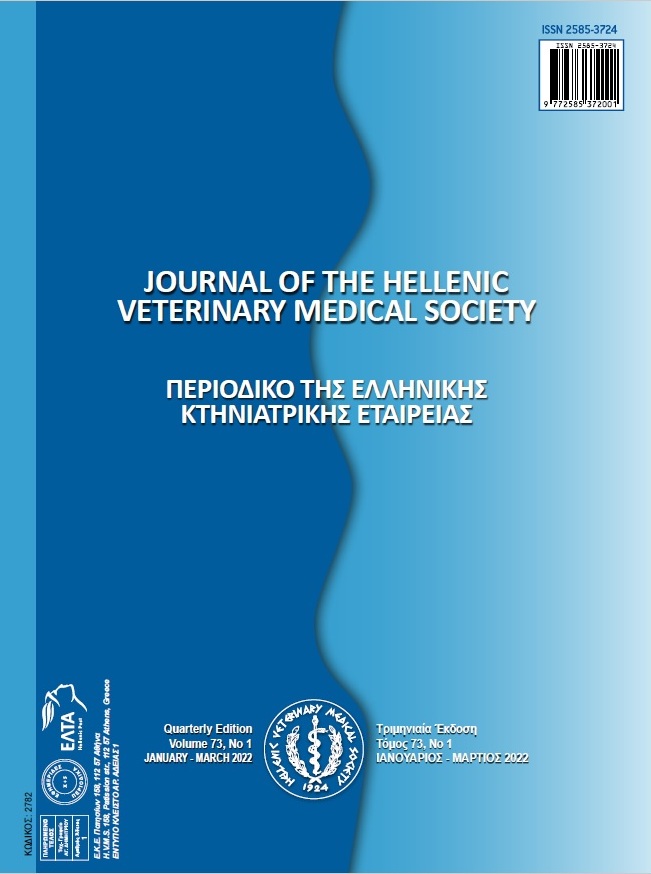Effects of milk yield and quality at post-calving period on Algerian cows’ reproductive performances
Abstract
This study was carried out to determine the association between milk production characteristics at the start of lactation (the first three month of lactation) and the performance of reproduction within dairy cows of Algeria. Data were collected from Holstein cows (n=920) that calved between October 2017 and October 2019. Reproductive parameters included in the study were: calving to first-service interval (CFSI, days), calving to conception interval (CCI, days), services per conception (SPC), and conception rate at first-service (CRFS %). Milk parameters such as peak milk yield, cumulative milk yield in the first 30 days (Milk30), 60 days (Milk60) and 100 days (Milk100) postpartum of the cows. The milk composition traits analyzed were milk fat concentration (MF %) and milk protein concentration (MP %). These variables were used to calculate fat to protein ratio (FPR) for each stage of lactation (stage 1: 15–30 days, stage 2: 45–60 days and stage 3: 75–90 days postpartum). Pearson’s correlation analysis was used to determine the correlation between reproductive parameters and milk production variables.
The obtained results showed that peak milk yield, cumulative milk yield in the first 60 days (Milk60) and 100 days (Milk100) were significantly and positively (P<0.05) correlated with all the measured fertility parameters. Furthermore, fat to protein ratio (FPR) and milk fat content correlated significantly and negatively (P<0.05) with CFSI, CCI and SPC in the first two stages. The correlation between milk protein content with CFSI, CCI and SPC were negative and significant in the all three stages. Further research is required to identify the cause of this association.
Article Details
- How to Cite
-
AKKOU, M., Mohamed, B., & Fatiha, S. (2022). Effects of milk yield and quality at post-calving period on Algerian cows’ reproductive performances. Journal of the Hellenic Veterinary Medical Society, 73(1), 3757–3764. https://doi.org/10.12681/jhvms.25681
- Issue
- Vol. 73 No. 1 (2022)
- Section
- Research Articles

This work is licensed under a Creative Commons Attribution-NonCommercial 4.0 International License.
Authors who publish with this journal agree to the following terms:
· Authors retain copyright and grant the journal right of first publication with the work simultaneously licensed under a Creative Commons Attribution Non-Commercial License that allows others to share the work with an acknowledgement of the work's authorship and initial publication in this journal.
· Authors are able to enter into separate, additional contractual arrangements for the non-exclusive distribution of the journal's published version of the work (e.g. post it to an institutional repository or publish it in a book), with an acknowledgement of its initial publication in this journal.
· Authors are permitted and encouraged to post their work online (preferably in institutional repositories or on their website) prior to and during the submission process, as it can lead to productive exchanges, as well as earlier and greater citation of published work.



